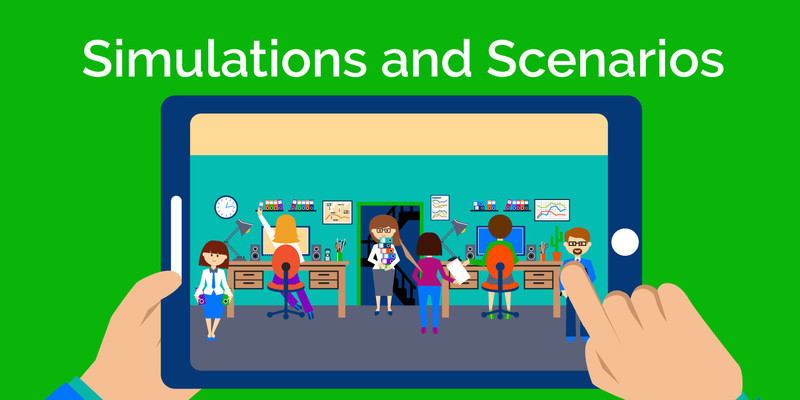e-Learning Ecologies MOOC’s Updates
Essential Peer Reviewed Update #3: An eLearning Simulation
A simulation is a great learning tool exactly because learners can attempt to tackle real-life situations without the fear of failure. An eLearning simulation is an eLearning course which uses different, simulated scenarios in a controlled environment to prepare learners for real-life situations. It helps an organization determine whether its employees are ready to tackle actual real-life responsibilities as well as the real challenges faced in a working environment, without the repercussions.
The following are the elements of an eLearning simulation:
1. Real-Life Problems or Scenarios
The real-life scenario should sharpen a specific skill, which is required to make an informed decision in a challenging event. At a later point of time, when actual tasks are assigned to the learner/employee, they will face no issues in tackling them as they have already performed the same in a simulated environment.
2. Immersive Graphics and Sound
A simulation is nothing but a set of questions if it is not accompanied by immersive graphics and sound. The graphics and sound should be such that they can actually put a learner/employee in the middle of the situation. It should invoke in them the same emotions a real-life challenge would, where they will need to think on their feet. Using videos and animated storylines, along with sound and music that suits the mood of the scenario are the way to go.
3. Relatable Characters
eLearning simulations usually have lots of characters in each scenario, just like a story, or real life for that matter. When crafting these characters, it should be kept in mind that they be relatable. For example, if the learner has to play out a scenario as a character, or deal with other characters he/she should be able to relate with them. This can be done by placing the character in the same work environment as the learner/employee, giving the same designation as the learner/employee or deal with characters that the learner/employee usually has to deal with (like dissatisfied customers).
4. Real-Life Tools and Behaviors
You need to create a world quite similar to the real world for your eLearning simulation to succeed. The eLearning program should involve the same tools, technical and software employees/learners use in real life. When simulating a process, every little detail should be accounted for, lest the employee skips that little detail in real life just because it was not there in the simulation. For example, when simulating hardware repair, use tools such as wrenches, screwdrivers, and wires in your simulation. When simulating a meeting, have employees use the appropriate greeting when dealing with seniors and juniors.
5. Assessments and Evaluations
The importance of assessments and evaluations in any eLearning course cannot be overstated. For starters, they help the learners track their progress themselves, and evaluate where they stand. Secondly, they provide the organization with measurable data to track the learner’s performance. Quick assessments and mini-quizzes should be strategically placed in a simulation at regular intervals to use them most efficiently.
For more information, visit https://elearningindustry.com/simulation-based-learning-skill-practice-elearning and https://elearningbrothers.com/blog/create-interactive-elearning-simulations-3-steps/.



zero turn mower
Best welding guide
The battle masters
incfile reviews
I love this great blog, i just need it. Thanks for share that. Thank you so much for posting this great blog.
Certus Trading Reviews will show you strategies that work across multiple asset classes so that you can find high probability trading opportunities in all market conditions trading can be a very rewarding experience, but you must learn the details first.